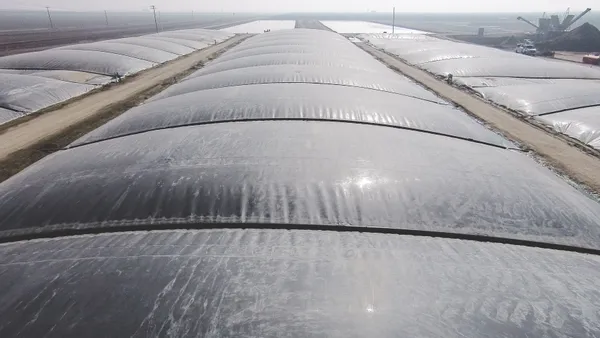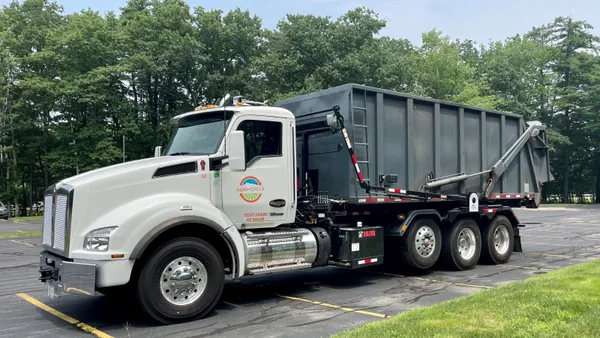Dive Brief:
- The Solid Waste Authority of Central Ohio (SWACO) announced on Oct. 9 the launch of its Central Ohio Food Waste Initiative, a program that intends to bring together business leaders and other stakeholders to develop an action plan for reducing and diverting food waste.
- The initiative is a partnership between Resource Recycling Systems, Biehl Consultancy and SWACO, and includes more than 40 central Ohio organizations from all steps of the food chain, including producers, farmers, retailers, nonprofits and retailers. The group wants to introduce an action plan by the end of Q1 2019.
- SWACO estimates 13% of all waste that goes to landfill is food waste, equaling more 143,000 tons, and has set up a website to track its progress. The site reported a 7.2% food diversion rate for 2017.
Dive Insight:
Earlier this year, SWACO adopted a new solid waste management plan that set a goal of extending the Franklin County Sanitary Landfill's lifespan to exceed 30 years of capacity. This latest initiative comes in tandem with two developing trends: recycling in Ohio and food waste diversion nationwide. According to recent reporting from Columbus Business First, about 70% of waste generated in central Ohio that currently goes to landfill could be recycled. Increasing the amount of recycled material in central Ohio by 35% would mean 400 jobs, $19 million in payroll and $115 million in gross revenues.
Compared to other states, Ohio has so far been relatively unscathed by China's strict import polices. Some localities are seeing rate increases or service restrictions, but overall, because the state is not as reliant on exports to China as some other states, the market effects have been survivable. Coupled with an estimated 40 years of remaining landfill capacity in the state — which has made Ohio an import hub for some states in the Northeast — there has been less pressure to make big changes recently.
Though food waste diversion and reduction remains a nationwide trend, with an increasing amount of attention on upstream reduction strategies. Individual cities, like Baltimore and Denver, have been making their own plans to reduce commercial and consumer food waste, much like what SWACO has proposed.
Nationally, while not a hot-button issue, food waste remains on the minds of legislators and policymakers. The most recent versions of the Farm Bill include food waste and biogas provisions and, despite changes in environmental policy under the Trump administration, the federal goal of halving food waste 50% by 2030 remains in place.









